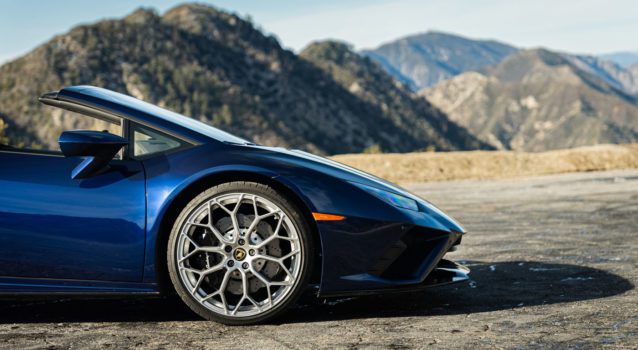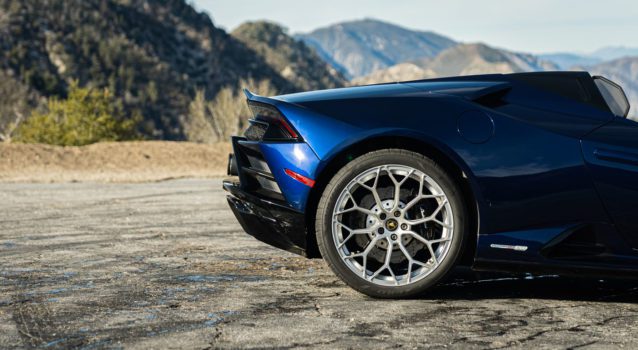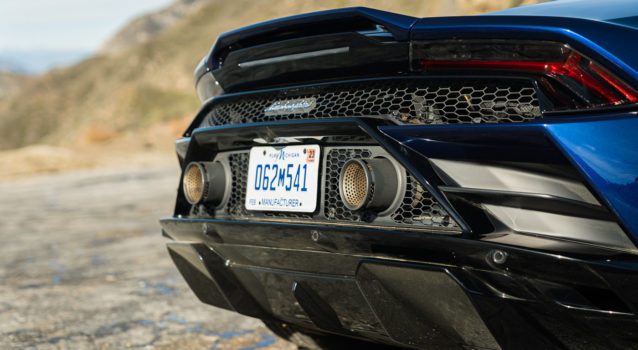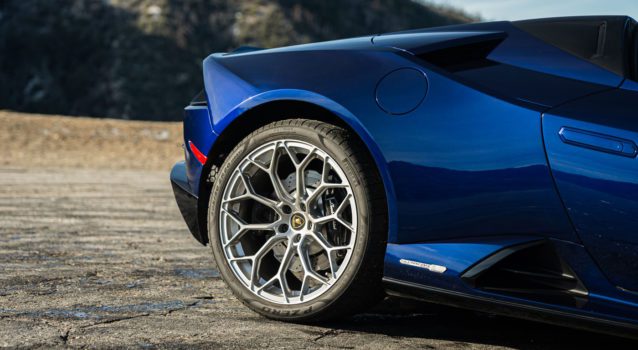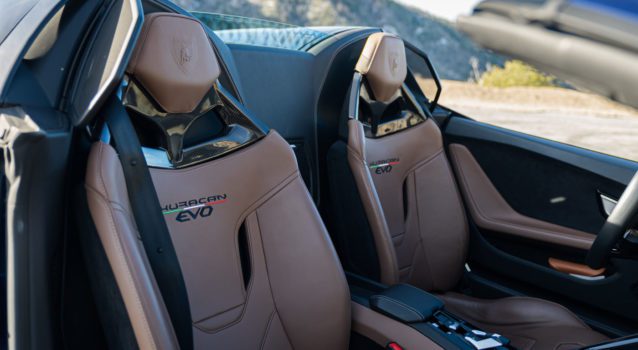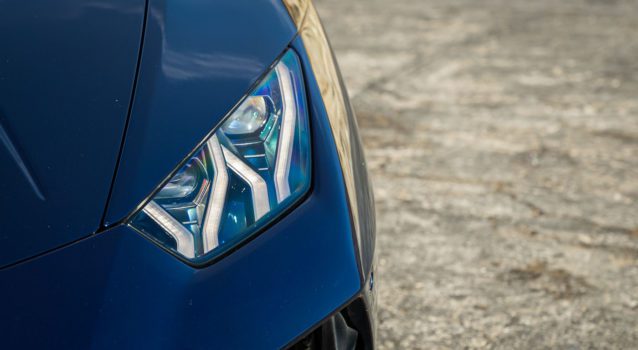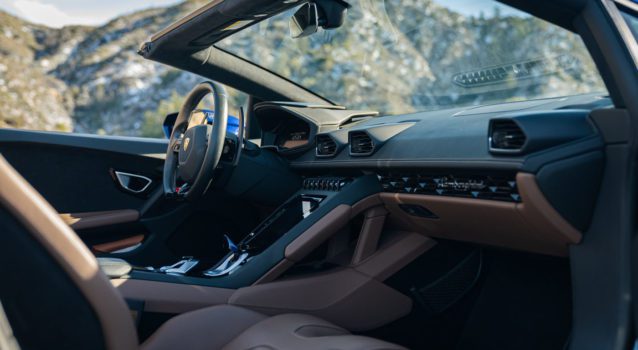Lamborghini Huaracan EVO RWD Spyder Review
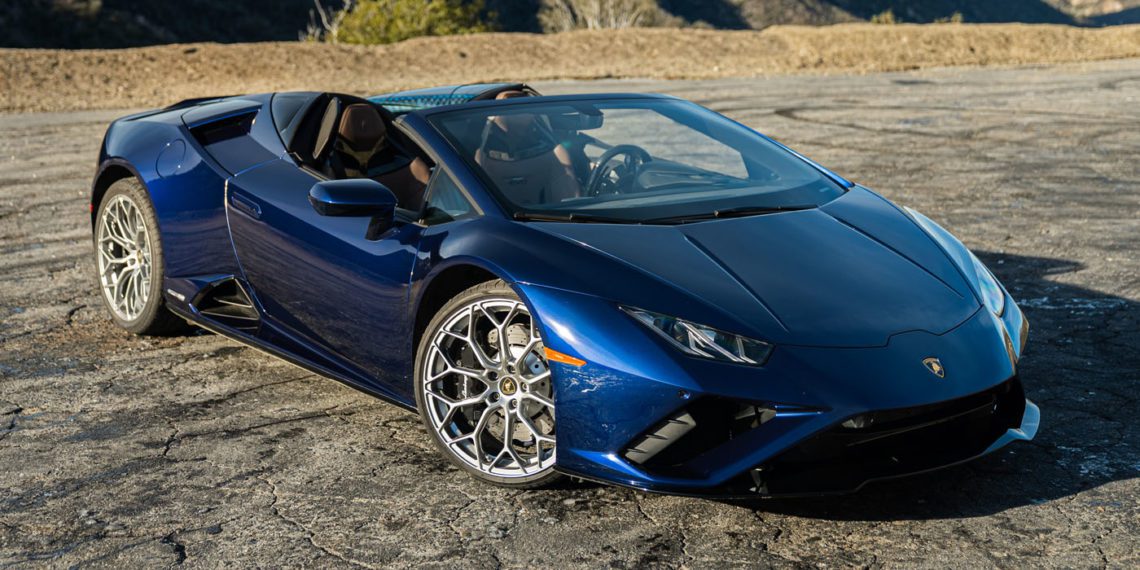
By Gabriel Vega
On the flip side, we have the car I’ve been driving this week, the Lamborghini Huracan EVO RWD Spyder. On paper, this rear-driven drop-top isn’t all that different from its all-wheel-drive sibling. Sure, its V10 has been de-tuned, churning out a measly 610 hp while its front wheels have been delegated to just steering duties. However, with all that power going to the rear wheels and no roof to isolate you from that glorious naturally-aspirated masterpiece behind you, the RWD Spyder wakes up a side of the Huracan that has laid dormant. Instead of an easy point and squirt supercar, you get a proper thrill machine that keeps you on your toes, demanding your full attention.
Long Live The Wedge
It’s hard to believe that the Lamborghini Huracan debuted nearly eight years ago. The classic wedge shape and its many hexagonal accents still feel pretty relevant from a design aspect. Thanks to a thorough refresh in 2019, this latest variant of the Huracan is one of the best looking yet. Take the front bumper, for example, and its styling exclusive to the rear-driven models. While it’s been re-shaped to channel even more air into the car’s many cooling components, it also gives the Huracan an angrier face than ever before. If anything, this latest look showcases how tame the original Huracan’s styling was.
The rear of the RWD Spyder sees the most extensive changes over its predecessors. While you won’t be looking at that NA V10 through a glass engine cover, Lamborghini has done a great job of adding angular slats finished in gloss black to not only help with cooling but to retain the car’s angular styling. Also gone are the quad exhaust tips of old, in favor of two massive exits that visually cut through the vehicle’s rear. As if the exhaust tips weren’t pronounced enough, a relatively open hexagonal rear grille gives you a clear view of the entire system, among other components. A tiny spoiler and updated diffuser tie up the rear nicely, solidifying the car’s sporty yet purposeful aesthetic.
While I’m a big proponent of supercars wearing loud attention-grabbing colors, I can’t help but love my tester’s subtle yet classy spec. The deep Blu Astraeus exterior finish looks almost black at night while exhibiting plenty of sparkles once the sunlight hits it. The dark shade contrasts nicely against the silver 20-inch forged wheel’s intricate multi-spoke design.
The interior is perhaps the classiest element of this spec, forgoing bright colors with attention-grabbing contrast stitching in favor of an elegant Terra Asia Vintage tone with contrasting black elements throughout the cabin. This is about as visually under the radar as a Lamborghini can get, that is, until you fire it up.
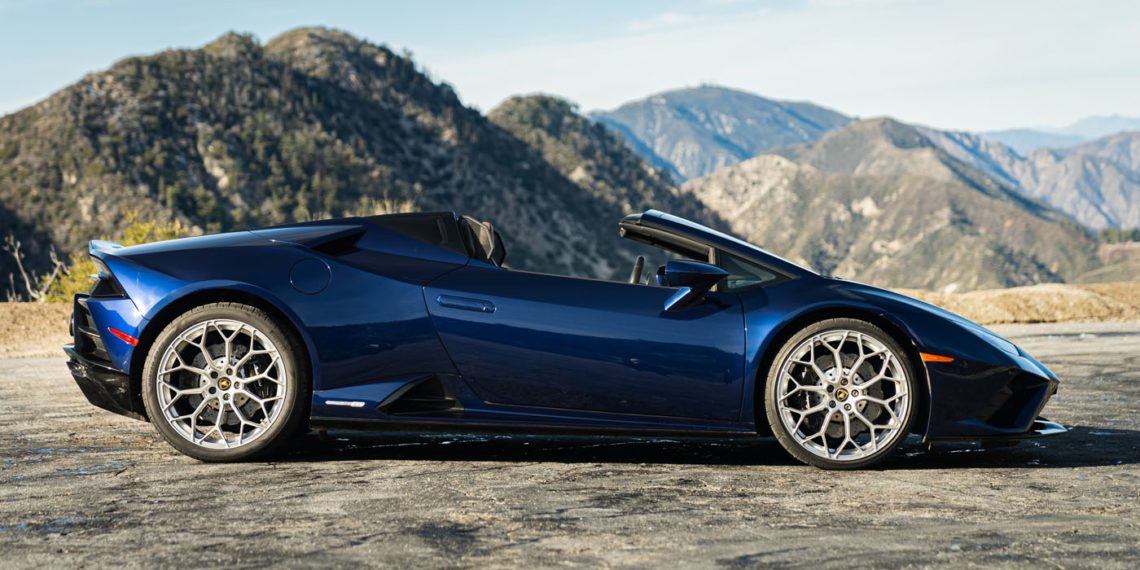
Ready, Fire, Aim
The star of the show is the 5.2-liter engine in the middle of the car, developing 610 hp and 413 lb-ft of torque. All of that power reaches the rear wheels via a seven-speed dual-clutch transmission, allowing the RWD Spyder to hit 60 mph in 3.5 seconds before continuing to a top speed of 201 mph. While these are proper supercar stats, the RWD Spyder is the slowest current Huracan variant to 60 mph, losing out to its AWD EVO sibling and its sub-three-second run. However, these marginal differences are meaningless in the real world as the RWD Spyder feels scare-yourself-fast.
I will miss this V10 once it’s gone. With peak power coming in at 8,000 rpm and peak torque at 6,500 rpm, the Huracan demands you ring it out to redline. Drive it conservatively, and you could easily be fooled into thinking the car isn’t as fast as its stats suggest, thanks to the lack of crazy low-end torque. This car rewards you the more aggressive you are with the throttle. As all of its main competitors are turbocharged, the Huracan’s power delivery has become unique, with virtually no other supercar offering the same driving experience.
Show the EVO RWD Spyder some bends, and the magic behind its rear-driven configuration becomes clear. The car’s handling characteristics change pretty drastically with no differential or other drivetrain components upfront. Gone is the tendency to understeer, instead replaced by a very agile nose that makes the Huracan feel lighter on its feet and more eager to change direction. There’s even excellent steering feel to accompany the car’s agility, proving a bit on the lighter side but still delivering excellent feedback.
With three main driving modes dubbed Strada, Sport, and Corsa, you can significantly change the Huracan’s behavior. Given its rear-drive configuration, the Italian carmaker developed a new traction and stability control system to keep things in check. Stay in either Strada or Sport, and the Huracan will never step out on you, putting all of its power down while remaining incredibly stable and composed. Step over to Corsa, and you’re genuinely on your own. With all of the systems dialed back, the RWD Spyder becomes properly unruly, ready to stab you in the back if you misbehave with the throttle. This is where the RWD Spyder wins in the fun department, requiring you to pay attention and be truly involved in the drive.
Premium, But Tight
If the RWD Spyder makes any compromises, it’s the car’s overall lack of visibility and interior space. Adjusted to my (5’10) preferred driving position, the carbon-backed optional seats sat low in the cabin, giving me decent headroom. However, I can’t imagine I’d feel the same if I had a helmet on or were taller than six feet. With the roof up, the Huracan feels a bit claustrophobic, tight even, despite technically having ample room for two people.
The Huracan is decently quiet on the highway with the top-up, although you’ll always hear a bit of that V10 singing in the background. While there’s no complex hardtop system present, the Huracan’s soft roof folds in 17 seconds while driving up to 31 mph. In my experience, it’s more than fast enough to fold at a set of lights, giving you excellent flexibility.
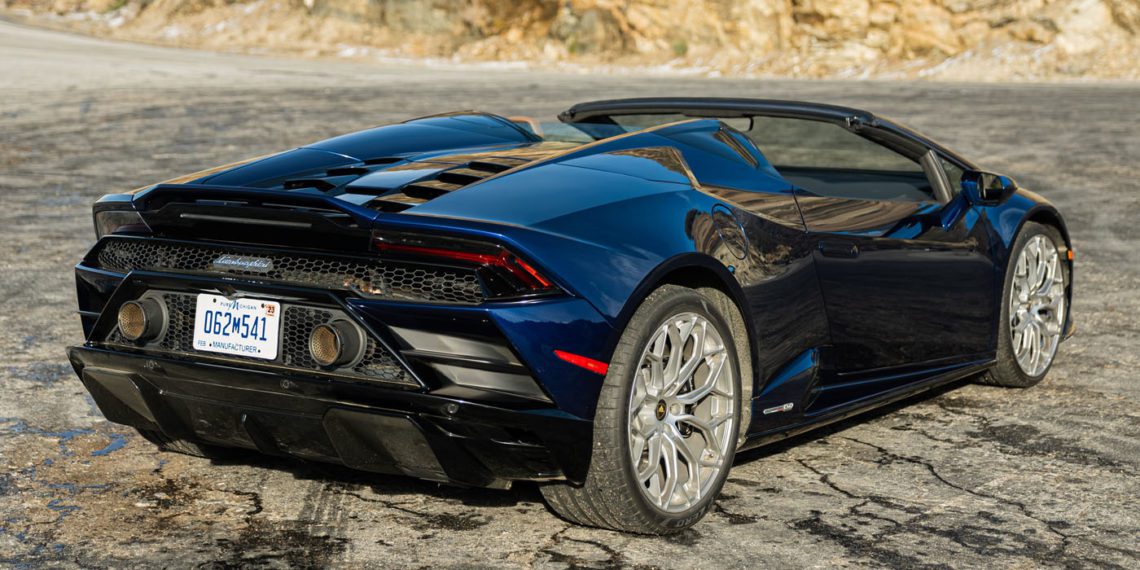
Is The Lamborghini Huracan EVO RWD Spyder Worth $290,000?
As its main competitors embrace turbocharging, the Huracan has become a unique player in its segment. With its loud, naturally aspirated engine, cramped cabin, and firm suspension, the Huracan doesn’t make significant sacrifices in search of becoming a supercar you can daily drive. Instead, it focuses on its primary role, prioritizing the driving experience over everything.

